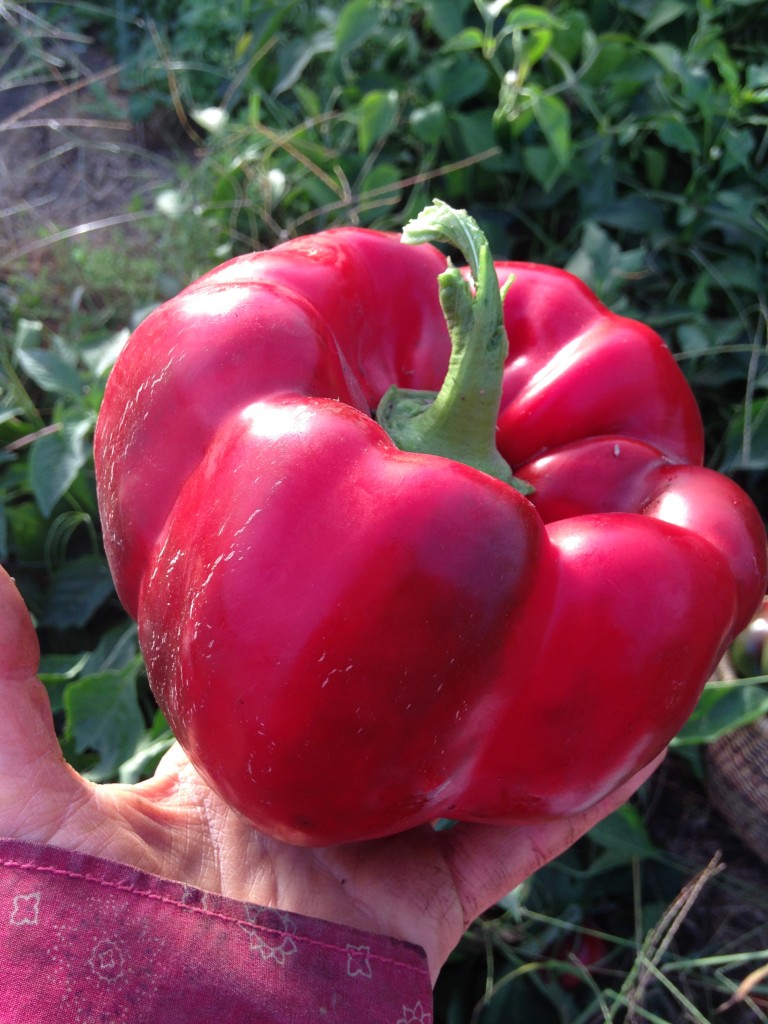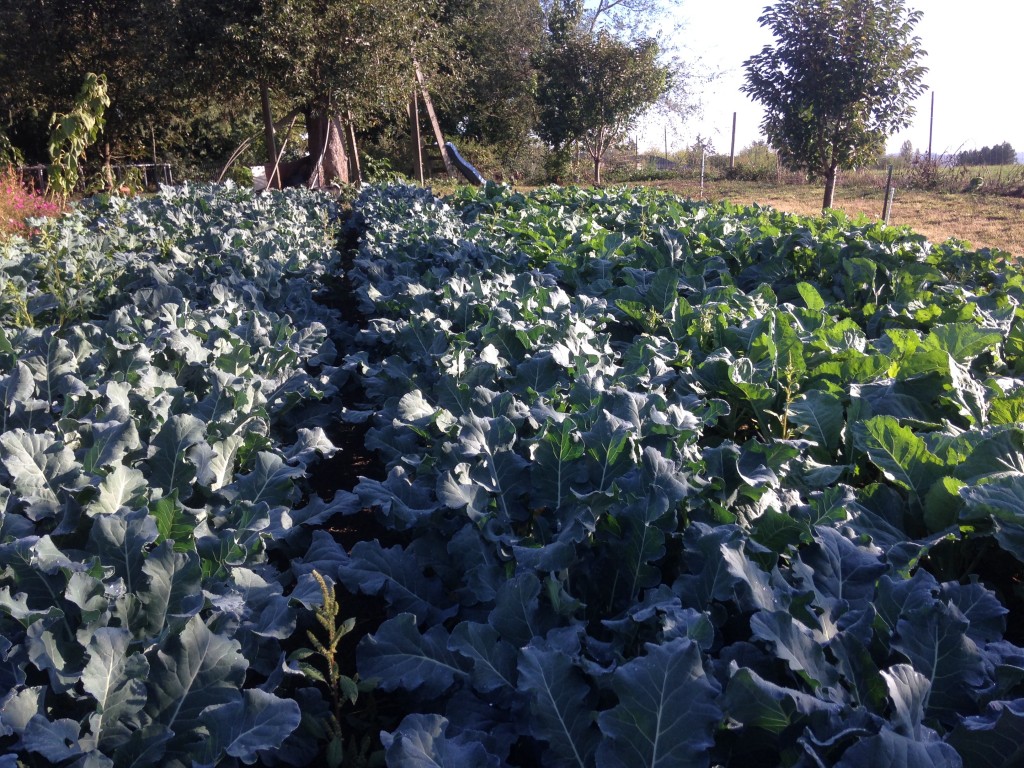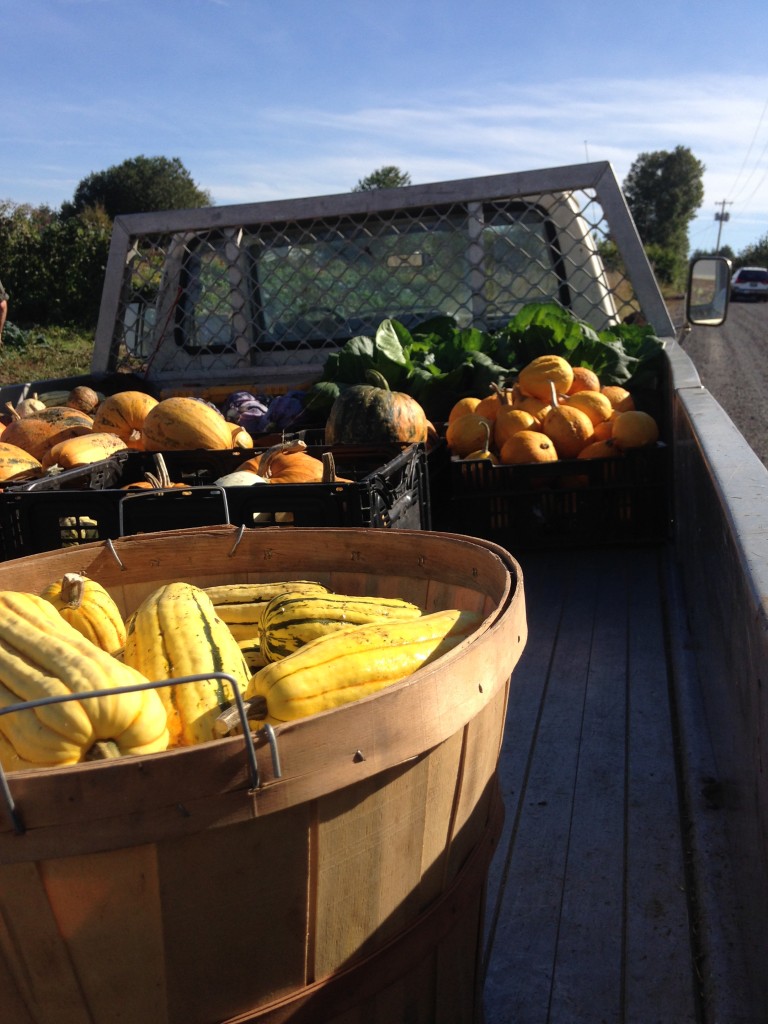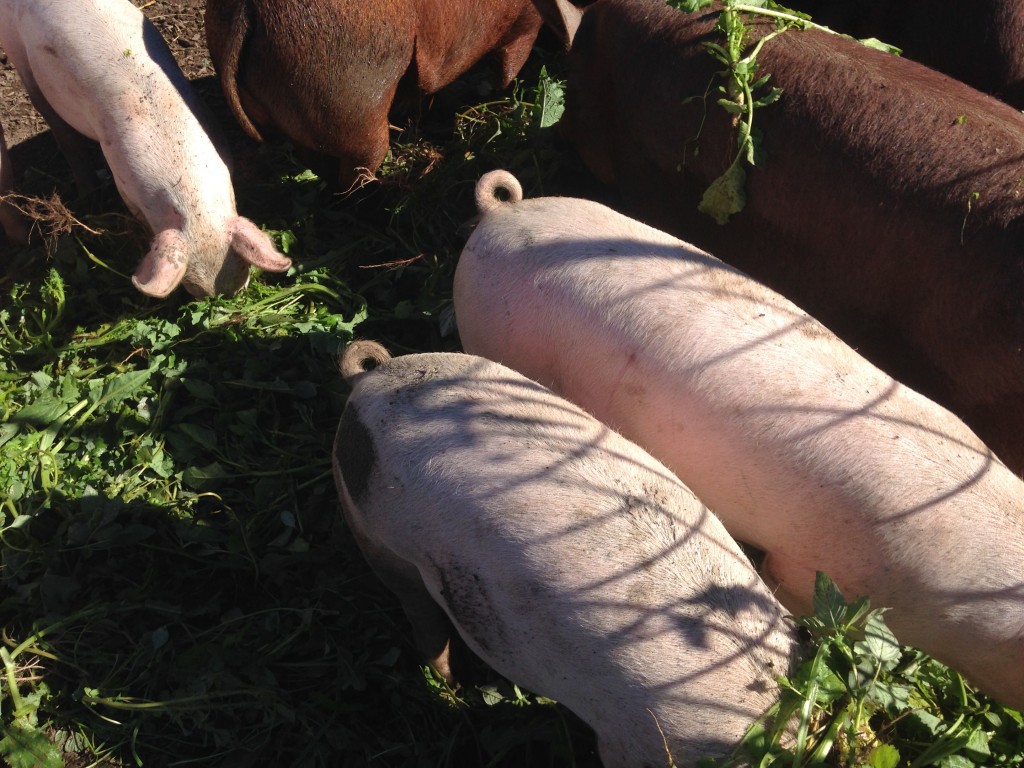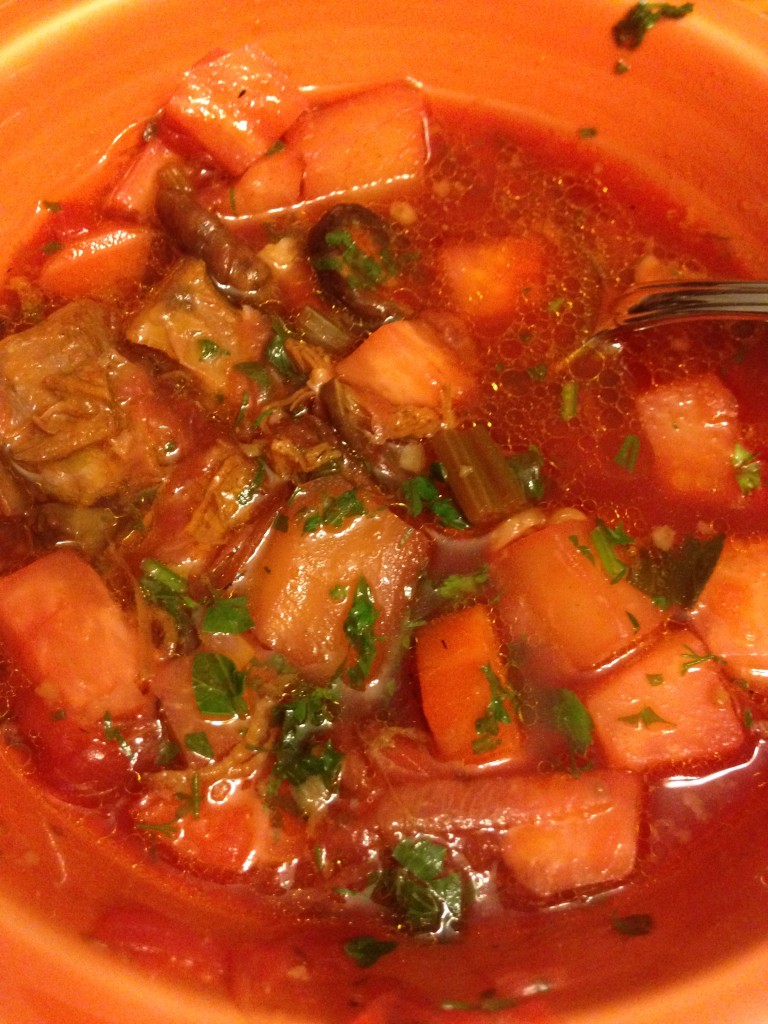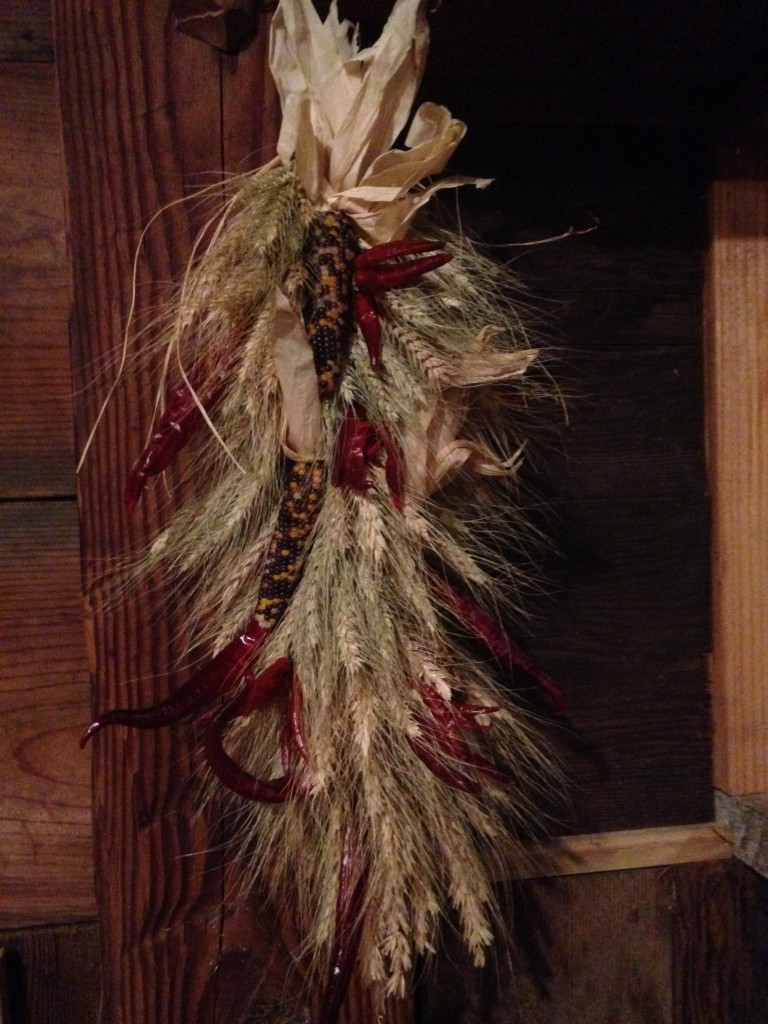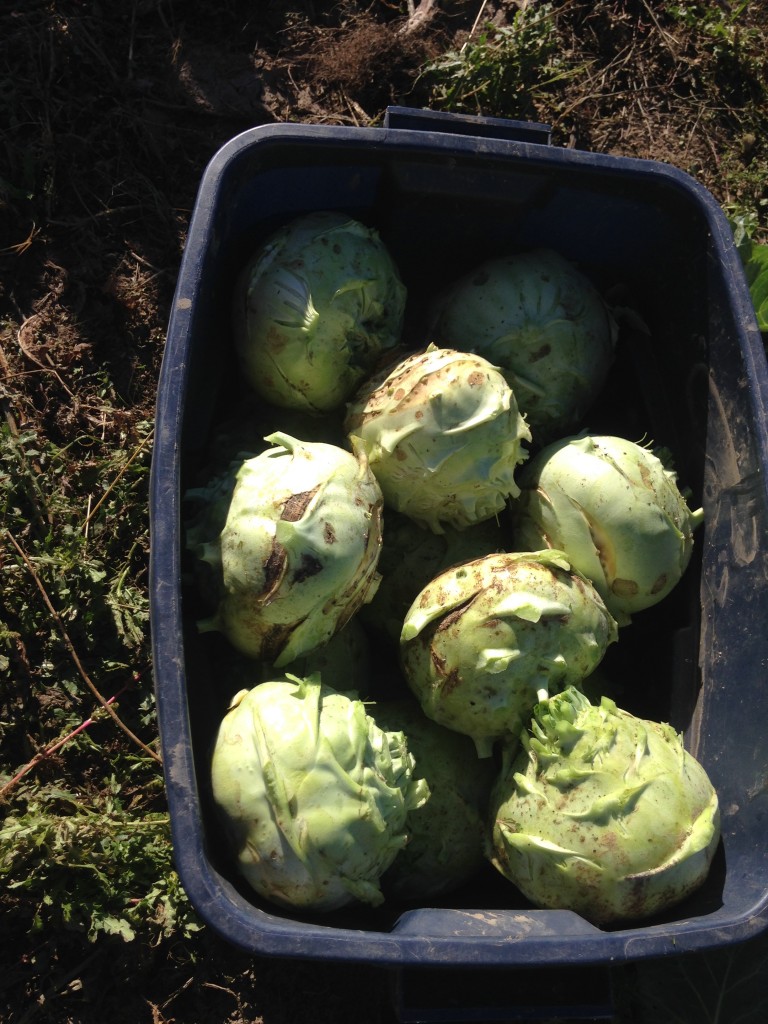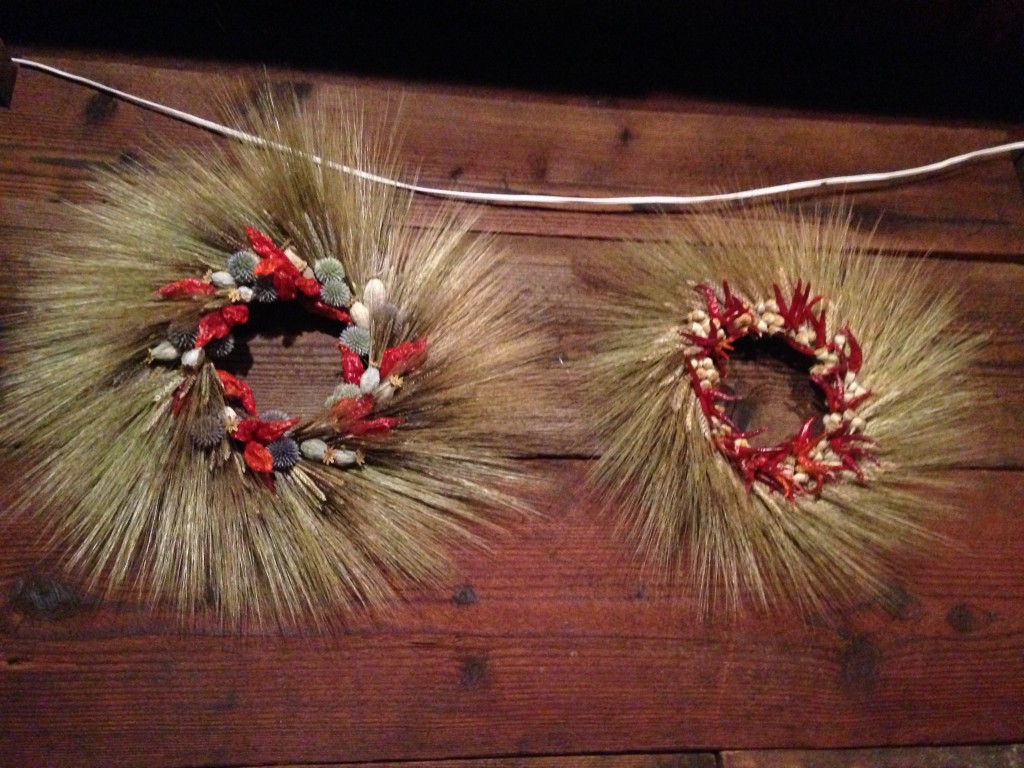Week #27/29
• Napa (Chinese) Cabbage
• Daikon radish (the big long white radish – enjoy!!) or red radish
• Onions (Tropeo di Italia (torpedo shaped pink onion) and a large white or yellow onion
• Garlic
• Leeks
• Kale
• Broccoli or cabbage (you can cut the cabbage into wedges and roast with salt and pepper and parmesan cheese, it is delicious)
• Winter squash
• Parsley
• Tomatoes (either cherry or salad varieties, enjoy them while you can you never know when it will be your last tomato)
• Peppers (green and some red)
• Hot peppers
• Celeriac or giant kohlrabi
• Eggplant
We are busy weeding and preparing the area for the fall/winter. The rain has helped the cover crop germinate and give new life to the brassicas (broccoli, cabbage, kale family). We have been battling the aphids and it is an uphill battle. We cannot remember such a bad year. Our Brussels sprouts are in dire need and with so many leaves and small sprouts getting to the aphids is really tough. We will be spending time with harvesters today striping leaves so that the organic spray we use can reach the aphids. Hopefully we can save them.
It is the time of the giant root vegetable! The daikon and the kohlrabi vary in size but some are enormous. Last week I gave a Ukrainian borscht recipe, if you didn’t make it there is still time! It uses up tons of veggies and is delicious as well. You can always cut your veggies up and toss with olive oil, salt and pepper and roast them. You can eat them just like that or Mary Kay shared that she takes those roasted veggies and freezes them and tosses them into soups later on in the winter. I have also included some recipes for fermenting those veggies. This adds great nutritional and health benefits to those veggies. Kimchee and slaws are the way to go to eat up all that cabbage, kohlrabi and daikon.
We have two more harvests for the season after this week. Next weekend is the harvest festival. We are excited to welcome you and your friends. We have many exciting performances for you to see, great food to share, farm tours and wreaths and pottery for you to purchase. We hope you will join us for the 14th annual Harvest Festival.
It is time to sign-up for the amazing Thanksgiving harvest basket. It is typically a huge harvest with delicious veggies for your holiday meals. The cost is $35 and should be paid prior to the harvest. Pick-up is November 23 or 24. Please do sign-up. Also time to let us know your intentions for 2015. We want you to continue and want to reserve a spot for you. Deposits are due in December, but we would appreciate your letting us know as soon as possible.
Asian Coleslaw with Fresh ginger-sesame dressing
Dressing:
½ cup plus 1 tablespoon unseasoned or seasoned rice vinegar
1 tablespoon dark sesame oil
¼ cup granulated sugar
1 tablespoon minced fresh ginger
2 teaspoons soy sauce
salt and pepper, to taste
Coleslaw
6 cups thinly shredded green cabbage or 5 cups green and 1 cup red
3 cups shredded carrots
2 cups fresh spinach leaves, thinly sliced, with a few strips reserved fro garnish (divided)
1 red bell pepper, julienne with a few strips reserved for garnish divided
½ cup chopped fresh cilantro (optional)
Toasted white or black sesame seeds for garnish
To make dressing: In a small bowl, whisk together vinegar, sesame oil, sugar, ginger, soy sauce and salt and pepper and set aside. To make slaw: In a large salad bowl, combine cabbage, carrots, spinach and bell pepper. Pour about 2/3 of dressing over cabbage mixture. Gradually add more to taste. Garnish with reserved spinach and pepper, toasted sesame seeds and cilantro.
Thai-Style Cabbage Salad
Ingredients
• 4 tablespoons lemon juice
• 1 tablespoon plus 1 teaspoon peanut oil
• 1 tablespoon plus 1 teaspoon brown sugar
• 2 teaspoons Thai fish sauce
• 1 green cabbage, finely shredded
• 5-6 leaves kale
• 1 small red onion, sliced extremely thinly
• 3 peeled and grated carrots
• 1/2 cup chopped fresh mint leaves
• 1/2 cup chopped fresh cilantro leaves
• Honey-roasted peanuts
Instructions
1. In a large mixing bowl, stir together the lemon juice, oil, sugar and fish sauce until the sugar is dissolved. Add the cabbage, kale, onion, carrot, mint and cilantro and toss well. The dressing will coat the ingredients very lightly; there will not be a pool of dressing in the bottom of the bowl. Throw in a handful or two of peanuts, toss again, and serve.
2. Serves 8-10.
Quick notes
Technique note: An easy way to get super thin slices of onion for use when you are eating them uncooked, as in this salad, is to do it this way. Slice an onion in half lengthwise (stem to root), cut off stem end and root end, peel off and discard papery skin. Then peel off a single layer of onion, press it flat against the cutting board, and slice as paper-thin as possible. Chop the onion one layer at a time, for maximum control.
Celeriac Slaw
From Carried Away (a great place to eat in Aptos, CA…if you ever need a caterer, we highly recommend them)
1 celery root, peeled and cut into julienne (or grated if you don’t have a mandolin, some of you may be able to julienne with a sharp knife)
1 egg
1 cup oil
1 Tablespoon capers, chopped
2 Tablespoons lemon juice
salt and pepper to taste
2-4 Tablespoons chopped parsley (or cilantro, or other fresh herb)
Boil a pot of water. Add the thin slices of celeriac for one minute, just to blanch them. Drain and set aside. In a blender mix the egg, lemon juice, salt & pepper. While that is mixing, slowly add in the oil. Spoon the sauce over the celery root, add the capers and the parsley, then toss. (Julia’s note: I’ve successfully skipped the blanching part)
Potato-Celery Root Cakes
from Deborah Madison
1 pound potatoes, peeled
1 pound celery root, peeled
3-4 Tablespoons oil
Salt & Pepper
Grate the potatoes and celeriac, mix together. In a heavy skillet heat half the oil over med. heat. Add half the potatoes-celery root mixture, making a layer about 1/2 inch thick. Season, then cover with the other half of the mixture. Press down on the cake and neaten the edges. Reduce heat to low and cook until the bottom is golden, about 10-15 minutes. Turn the cake out onto a plate, add the remaining oil, slide the cake back into the pan and cook the other side until golden.
Storage: Wrap celery root in plastic and refrigerate for up to one week.
Spices that go nicely with celery root:
Nutmeg, garlic, cinnamon, cloves, allspice.
measuring:
1 small celery root, sliced = 2 cups
Nutritional Value: Celery Root is Rich in phosphorous and potassium; 40 calories per cup
A very basic cooking method:
Peel and cube celery root and cook in boiling salted water about 10 minutes. Serve with butter or lemon juice.
A Celery Root Idea from Chef Andrew Cohen:
Fine dice celeriac, carrots, onions, shallot, garlic, button mushrooms, yukon gold or yellow finn potatoes, and a little prosciutto.
Cook some French lentils (the small green ones) until done with some thyme and garlic. Reserve some of the cooking liquid.
Saute the vegetables in the prosciutto renderings and, if you’ve got it- duck fat, otherwise use a neutral oil. Start with the alliums, add the mushrooms, then the carrots and celeriac. If they seem to be taking too long, add a splash of sherry or stock and cover for a couple minutes. Add the potatoes and cook until tender, adding liquid and covering if necessary as well. Fold in the lentils and cook to warm through, using the reserved lentil cooking liquid if needed to lubricate the lentils. Season with S&P and a splash of sherry. I served this with salmon with a chanterelle crust, celeriac mashed potatoes, asparagus, and a red wine mushroom stock reduction. The mushrooms were dried chanterelles as were the mushrooms in the crust on the salmon.
Celery Root and Apple Salad with Toasted Walnuts
serves 4 to 6
2 medium celery roots, peeled and cut into matchsticks
2 medium red delicious apples, cored and cut into matchsticks
2 tablespoons fresh lemon juice
3 green onions, thinly sliced
1 bunch watercress leaves
dressing:
2 tablespoons red wine vinegar
1 tablespoon mustard seed
1 tablespoon mustard
1 tablespoon honey
1/2 cup vegetable oil
salt and pepper
1 cup walnut halves, toasted
Combine the celery root and apple in a bowl and sprinkle with lemon juice. Toss with the green onion and watercress. Whisk the vinegar, mustard seed, mustard, honey and oil until well combined. Toss with the celery root mixture. Taste for salt and pepper and garnish with walnuts.
Pork Meatball and Daikon Sandwich
yield: Makes 4 sandwiches
Ingredients
Hot Chili Mayo:
• 2/3 cup mayonnaise
• 2 green onions, finely chopped
• 1 tablespoon hot chili sauce (such as sriracha)*
Meatballs:
• 1 pound ground pork
• 1/4 cup finely chopped fresh basil
• 4 garlic cloves, minced
• 3 green onions, finely chopped
• 1 tablespoon fish sauce (such as nam pla or nuoc nam)*
• 1 tablespoon hot chili sauce (such as sriracha)
• 1 tablespoon sugar
• 2 teaspoons cornstarch
• 1 teaspoon freshly ground black pepper
• 1 teaspoon coarse kosher salt
Sandwiches:
• 2 cups coarsely grated carrots
• 2 cups coarsely grated peeled daikon (Japanese white radish)**
• 1/4 cup unseasoned rice vinegar
• 1/4 cup sugar
• 1 teaspoon coarse kosher salt
• 1 tablespoon Asian sesame oil
• 4 10-inch-long individual baguettes or four 10-inch-long pieces French-bread baguette (cut from 2 baguettes)
• Thinly sliced jalapeño chiles
• 16 large fresh cilantro sprigs
preparation
Hot Chili Mayo:
Stir all ingredients in small bowl. Season with salt. do ahead Can be made 1 day ahead. Cover and chill.
Meatballs:
Line rimmed baking sheet with plastic wrap. Gently mix all ingredients in large bowl. Using moistened hands and scant tablespoonful for each, roll meat mixture into 1-inch meatballs. Arrange on baking sheet. DO AHEAD Can be made 1 day ahead. Cover and chill.
Sandwiches:
Toss first 5 ingredients in medium bowl. Let stand at room temperature 1 hour, tossing occasionally.
Kim Chee (use for Napa Cabbage, Daikon and other vegetables)
This is a general kim chee recipe, adaptable to any vegetable, sent to us by our friend Daniel, who did an internship at the Cultured Pickle in the Bay Area. While these instructions are for turnip, cauliflower and carrot, the method works for any combination of vegetable.
-Shredded pickles: this is essentially the same method for sauerkraut but it works really well with root vegetables. Basically you shred the vegetables (with a food processor is easiest) and then salt them. The salt draws moisture out of the veggies creating a brine. Here are step-by-step instructions for this method.
1. Wash the roots and cauliflower and trim off any soft spots
2. Weigh all the veggies and record the weight
3. Calculate anywhere from 1.5 – 2% of the vegetable weight and weigh out that much salt.
4. Shred the root vegetables and cut the cauliflower into small pieces combining all in a giant bowl as you go.
5. Thoroughly mix the shredded roots and cauliflower with the salt (you can add any spices, chopped garlic, shredded ginger, minced anchovies, herbs or citrus zests that you want at this point. Be aware that garlic flavor tends to bloom and get stronger during the pickling process).
6. Let the mixture sit for a couple of hours and see how the liquid is drawn from the vegetables.
7. Pack the vegetables with their liquid into a crock or as many gallon glass jars as it takes to hold them. Try to press out as much air as you can and leave some head room because the fermentation will bubble up.
8. Put some sort of cover on the surface of the veggies and a weight on top of the cover to keep them pressed under their liquid. I like to use the outer leaves from a head of cabbage folded as needed to cover the shredded vegetables with a gallon jug of water as weight.
9. Let the jars ferment for anywhere from 2 to 8 weeks. It should be in a corner somewhere with a temp around 60-65 degrees Fahrenheit. Taste it as it goes. Push it back down every once in a while. Skim off any mold or white yeast blooms that show up on the surface (they are not harmful, don’t worry).
10. When the flavor has gotten sour enough for you, pack the pickles into jars in the fridge to stop them changing further, or move them to a cool root cellar. (If you want the pickles to be stable for months and years at above refrigeration temperature, you can up the salt percentage to near 3%.
-Whole Brined pickles: these are very easy and quick and take less shredding.
1. Wash and trim the vegetables
2. Cut the cauliflower into florets and if the roots are large I would cut them into about two-inch chunks.
3. Make a brine: measure out enough water that you will be able to cover all the prepared vegetables in your crock or gallon jars. Then dissolve in this water 50 percent of its weight in salt. For example, 1 liter of water gets 50 grams of salt, 6 liters gets 300 grams of salt. Also add any flavoring to the brine like flowering dill and smashed heads of garlic. I like to add a bunch of dried chiles. Chile flakes and ground spices are good too. You can also heat the brine to dissolve the salt and add the spices like a tea for more flavor, just make sure it has cooled completely before the next step.
4. Put all the prepped vegetables in your fermentation container and pour the brine over to cover them completely.
5. Again put some sort of cover with a weight to keep the vegetables from coming to the surface.
6. Let them ferment for at least two weeks. Check them as they go.
7. Refrigerate to stop the process or put in a cool place to slow it down.
Kohlrabi and Chicken Stew
Posted by Seth Just – June 1st, 2011
• 3-4 lb. Chicken
• 2 lb. kohlrabi/broccoli stems
• 3/4 lb. Carrots
• 4 Tb butter
• 4 cups sliced onions
• 1 cup peeled, chopped tomatoes
• 2 tsp salt
• 1 tsp black pepper
• pinch saffron threads
• 1/4 tsp turmeric
• 1/2 tsp cinnamon
• 2 tsp ground coriander
• 1 quart chicken broth or water
• 4 sprigs parsley
• 1/2 small cabbage
Cut chicken into serving pieces. Peel kohlrabis and/or broccoli stems; cut larger ones into 1-inch chunks. Cut cabbage into 1/4-inch strips. Peel carrots and slice diagonally into 1/2-inch thick pieces.
In a large saucepan, heat the butter and sauté the onions, tomatoes, salt and spices for 4-5 minutes. Add the chicken and cook for 5 minutes. Add the broth or water and parsley. Bring the broth to a boil, reduce heat, cover and simmer for 20 minutes. Add the kohlrabis and carrots, cover, and simmer for 10 minutes. Finally, add the cabbage and simmer, uncovered, 10 minutes longer or until all the vegetables are completely tender.
Adapted from The Victory Garden Cookbook by Marian Morash
